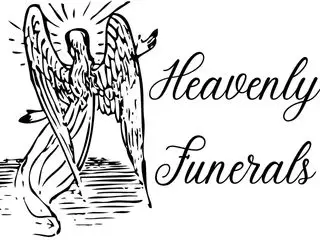Table of Contents
Understanding the distinction between a funeral and a memorial service can be as confusing as trying to tell apart a pair of identical twins at a family reunion. At first glance, they seem almost the same—both honor the life of a loved one who has passed away.
But look a little closer, and you’ll see they’re different in crucial ways. A funeral typically has the guest of honor—the dearly departed—present in a casket, while a memorial service can take place with or without the ashes and often occurs after the deceased has been laid to rest.

Both types of services provide the opportunity for friends and family to come together, share memories, and offer support. However, a funeral is generally more structured and happens shortly after someone’s passing, usually before the burial or cremation.
In contrast, a memorial service can be scheduled for a later date, allowing more flexibility for those who need it and potentially making it more of a celebration of life than a somber goodbye. So remember, while they may serve a similar purpose, a funeral is like the dress rehearsal with the main actor on stage, and a memorial service is more like a tribute concert where the band plays on in honor of a missing legend.
Key Takeaways
- A funeral service includes the body of the deceased, while a memorial service does not require it.
- Funerals typically adhere to a specific timeframe, often occurring before the final interment; memorials allow for a more flexible scheduling.
- Memorial services offer a chance for personalized tributes reflecting the individual’s spirit and personality.
Defining the Occasions
In the spectrum of farewells, a traditional funeral might appear as a more formal “goodbye,” while a memorial service plays out like the relaxed “see you later” of commemorations.
Funeral Fundamentals
A funeral could be likened to a final curtain call with all main characters present. Here’s the lowdown on what makes a funeral, well, a funeral:
- Traditional Setting: Typically held at a funeral home or a place of worship.
- Star of the Show: The deceased’s body usually takes center stage in a casket.
- The Plot: Often includes a service followed by a burial, where attendees bid farewell as the deceased takes up a new residence underground.
Memorial Specifics
Memorial services mix things up by ditching the body for a more ethereal presence, often with an urn holding the ashes if cremation is chosen. It’s the after-party of posthumous events:
- Custom Venues: They can set up shop anywhere from a park to Aunt Gertrude’s backyard.
- Main Attraction: An urn might be present, but bringing in the deceased’s ashes is optional.
- Vibe Check: Think of it as a mixtape of memories, with laughter and nostalgia on the playlist.
Event Planning and Execution

When it comes to the final send-off, whether it’s a traditional service or a personalized affair, the devil is in the details. Family members and planners must decide on location, timing, and how to infuse both personal and traditional elements into the ceremonies.
The Funeral Home Front
If one decides to go down the traditional route, funeral homes have the home field advantage. These establishments are well-versed in the rites and rituals that come with saying goodbye:
- Location: Traditionally on the premises or a place of worship.
- Planning: A funeral director quarterbacks the entire event.
- Timing: Usually within a week of passing.
- Rituals: Viewings, wakes, eulogies, and burials are the typical playbook.
Remember: Funeral homes are especially helpful when families prefer to leave the playbook unaltered.
Memorials: Mixing It Up
Memorials have shaken up the world of posthumous parties, allowing for a more personalized remembrance. Here’s how they stack up:
- Variety of Locations: From gardens to living rooms, memorials can pop up anywhere.
- Personalized Planning: Say “so long” with a mixtape or a taco bar—it’s your call.
- Timing: They can wait until everyone’s ready; no 24-second shot clock here.
- Flexibility: Flip the script with a more casual, mix-and-mingle kind of affair.
Pro Tip: One’s imagination is the only limit when planning a memorial—just remember to send the invites.
Rituals, Customs, and Atmosphere
Understanding the differences in ceremonies revolving around loss hinges on the rituals, customs, and the overall atmosphere present at these gatherings. Key distinctions arise in how people honor, remember, and celebrate the life of someone they’ve lost.
From Solemn to Celebration
Funerals tend to be somber occasions that focus heavily on the mourning process. They commonly include:
- Readings and prayers from religious texts to honor and show respect for the deceased.
- A committal service at a cemetery as part of the grieving process.
- Songs and hymns that may be reflective and have a more subdued tone.
In contrast, a celebration of life takes a much lighter approach:
- A focus on stories and memories shared in a joyful manner to remember the person.
- Music that was meaningful to the deceased and uplifting, contributing to a lighter atmosphere.
Accents and Symbols
At both funerals and memorials, certain accents and symbols play significant roles, such as:
| Funerals | Celebrations of Life |
|---|---|
| Somber flowers like lilies or roses | Vibrant flowers reflecting favorite colors |
| Traditional art and decor | Personalized decor like photo collages |
| Respectful tribute in a wake | Humorous anecdotes shared during a reception |
While one leans towards ritualized worship, the other embraces a casual and personalized tribute approach, where laughter and respect can coexist. Whether it’s through a structured wake or a thematic reception, both strive to honor and celebrate the unique life of the individual in their own way.
Social Dynamics and Personal Touches

When it comes to memorial services and funerals, the way people interact and the unique elements they bring to celebrate a loved one play pivotal roles. Each gathering offers distinctive opportunities for mourners to reminisce and honor the deceased through personalized tributes.
Mingling Mourners
Funerals and memorials allow attendees to comfort one another, share memories, and collectively navigate the waters of grief. Here’s a glance at the social dynamics at these events:
- Funerals: Often more formal, visitations before the service provide a time for mourners to gather and offer condolences to the family. It is a somber time for reflection, amid the whisper of eulogies and quiet murmurs of the grieving.
- Memorials: These may have a more lighthearted ambiance where friends and family are more likely to engage in uplifting exchanges that honor the individuality of the lost loved one. Laughter and joyful anecdotes often punctuate the air as attendees share stories and reminisce.
Honoring Individuality
The personal touches that reflect the loved one’s life are what make these events intimate and joyous despite the loss. Here’s a snapshot of how customization enhances the experience:
- Music Selection: A playlist might range from the favorite Beatles hits to that one guilty pleasure song only close friends knew the deceased loved.
- Displays and Tributes: A table could be adorned with photographs, beloved books, or even a collection of quirky magnets from their refrigerator.
- Reflection of Customs and Preferences: From preferred flowers to dress codes (or lack thereof), these are the details that celebrate a life in a way that is as unique as the person being remembered.


Leave a Reply